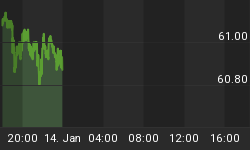Since the stunning result of the Massachusetts senatorial race, President Obama has softened his tone quite a bit, essentially saying to Republicans that if they have any good ideas, "Bring 'em on."
Whether he's sincere or not remains to be seen, but the implication is that he's unworried, because in his opinion the opposition party only knows how to criticize and doesn't have anything constructive to say.
He needs to call Wisconsin Congressman Paul Ryan, ranking member of the Committee on the Budget, and have him over for tea.
Ryan is a representative who appears to take his job - overseeing the federal budget - seriously. In 2008, he introduced legislation called "A Roadmap for America's Future." It died, so he's reintroducing it this year. It won't pass, unless the Democrats somehow manage to lose control of the House. It's just too simple.
It's also breathtakingly visionary. In one fell swoop, Ryan takes on taxes, health care, Social Security, and the federal deficit, and fixes them all. He puts the government back on the road to solvency, something no other plan comes close to achieving. Most important, he wants to shift our mindset, so we finally recognize that the cure for debt problems is not to pile up more debt.
Income and Other Taxes
Ryan has a nicely targeted sense of humor. For those who can't bear to part with today's elephantine tax code, he leaves it in place, and anyone who loves it can still use it. For the rest of us: Single filers would pay 10% on income up to $50,000 ($100,000 for joint filers) and 25% thereafter, with a generous standard deduction and personal exemption ($39,000 for a family of four). That's it. No loopholes, deductions, credits or exclusions. Fill out the postcard and mail it in.
Additionally, the plan promotes saving by eliminating a whole bunch of other taxes -- on interest, dividends and capital gains. It scraps the alternative minimum tax and abolishes the death tax. It replaces the corporate income tax - currently the second highest in the industrialized world - with a business consumption tax of 8.5%, about half the world average, putting American companies and workers in a stronger position to compete in the global economy. And it allows for immediate expensing of new business investment.
Health Care
A refundable tax credit - $2,300 for individuals and $5,700 for families - to purchase coverage (from another state if they so choose) and keep it with them if they move or change jobs. State-based high-risk pools. Supplemental payments to low-income recipients, who can choose their care rather than be consigned to Medicaid.
Medicare
Large-scale, common-sense reforms involving vouchers and medical savings accounts, along with a very gradual rise in eligibility age, designed to preserve the best parts of Medicare while securing its solvency for generations to come.
Social Security
Maintains benefits for current recipients, while making the program permanently solvent by combining a modest adjustment in the growth of initial Social Security benefits for higher income individuals with a gradual, modest increase in the retirement age. Includes a property right, so that your vested Social Security interest does not die with you. Those who own these accounts can pass on assets to their heirs.
Making all this work would require some adjustments, though. Nondefense discretionary spending, for example, would be frozen for ten years at 2009 levels in nominal terms and allowed to grow thereafter by an amount linked to CPI.
There has been immediate criticism from Democrats, mainly centered around cuts to Medicare. And some of the objections could be valid; maybe the plan could be tweaked a little to bring more of the opposition on board. Or maybe they'll just continue to complain because reducing the size of government doesn't sit well with them.
But the thing is, even the critics have been forced to admit that the plan would probably work. How do we know? Ryan had the confidence to submit it to the Congressional Budget Office for analysis. As you probably know, the CBO has stated frankly that continuing along the current path leads to unsustainable deficit levels and bankruptcy for the country.
According to CBO projections, debt will spike sharply upward in 2015, rising - relentlessly and unstoppably - to over 700% of GDP in 2080. Of course, the economy will be destroyed and government forced to default long before then.
If Ryan's Roadmap were adopted, however, the CBO estimates that debt/GDP would peak at 100% in 2043 and "decline thereafter, reaching zero by 2080," then move into surplus. (For the complete CBO report, go here.)
Yes, all predictions are bound to be flawed. Yes, we must remain skeptical of anything that comes from a politician. And yes, it'd be better for government to shrink more than this proposal envisions. But, especially concerning taxes, it's a big step in the right direction.
The president is wrong. There is another idea out there, and according to the government's own budgetary watchdogs, it's a good one. It "just" necessitates adopting a 75-year time line.
Of course, the odds of Congress looking that far ahead are slim to none, and you know where Slim is. But who knows, if enough Americans beat the drum for Paul Ryan, this country may actually have a future.
Doug Casey and his team keep saying that in this day and age, politics is inseparable from the economy and the markets. In The Casey Report, we closely follow the actions of Washington's movers and shakers, which help us, stake out the best action plan for our portfolio. Learn how to make the best of any crisis - and profit while others lose their shirts. Click here for more.
















